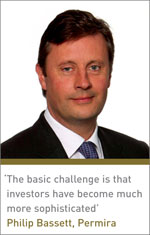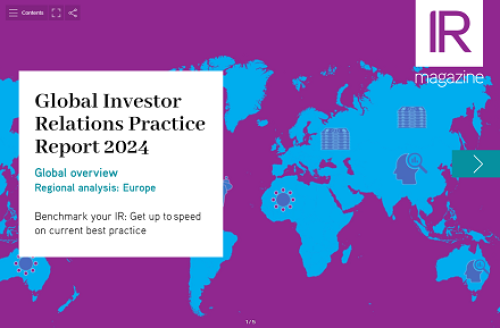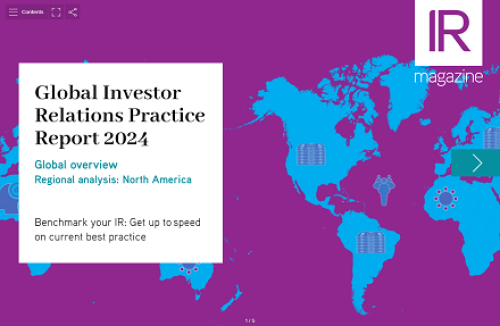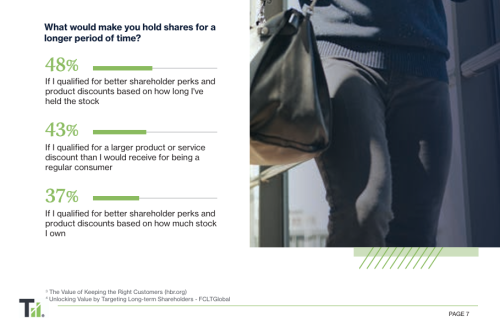What does IR look like in the private equity industry today?
Some IR professionals at publicly traded firms look down on their brethren in private equity (PE) IR. They make all manner of unrepeatable comments about the relative quality of personnel, the demands they face and the standards they achieve.
But how would your average IRO at a publicly traded company get on trying to do the job at a PE firm? We decided to find out by investigating the nature of the private equity IR role in today’s extremely challenging fund-raising market.
Erick Bronner at The Riverside Company in New York is nothing if not highly qualified: an undergraduate degree followed by an MBA, then a master’s in science & technology, undertaken concurrently with a law degree.
His career started as an accountant with Arthur Andersen but he soon moved to Wall Street, joining first Citicorp then Merrill Lynch as an investment banker in the telecoms sector.
The Riverside Company IR in numbers1 head of department: Eric Bronner2 senior colleagues, both also experts, both able to talk to all investors 2 junior professionals doing analyses 1 communications professional $3.4 bn in funds under management 4 fund groups 220 employees worldwide 20 offices in 14 countries |
As the tech bubble approached bursting point, he was ‘fortuitously recruited out of telecoms investment banking and into fund-raising,’ Bronner recounts.
He joined Merrill Lynch’s PE operation, before becoming a founding partner at Mercury Capital Advisors, which was spun out of Merrill’s Private Equity Funds Group in 2009.
Bronner moved to The Riverside Company to lead the firm’s IR department in March this year. It’s a seven-strong department, and a far cry from the early days of PE IR departments.
‘When people look down their noses at private equity IROs, it’s because they think it’s still the same as it was 10 years ago,’ explains a London-based European IRO, who asked not to be named. But it’s no secret that this field of IR has changed beyond recognition.
The way it was
In the past, the accusation that private equity IROs were ‘glorified secretaries’ may have had some basis in fact.
Most companies would have an administrator whose job was to make sure someone responded to investors’ questions, while capital raisings were typically handled by placement agents. ‘They delivered the fund, then simply disappeared,’ says our shy IRO.
When the world changed in 2007, however, so did a number of factors affecting this approach to PE IR. The investor base had grown hugely so there were now a lot of investors in a state of panic. That meant the bigger PE groups had little choice but to build out their investor relations.
‘The PE firms came to realize that long-term capital has to be managed actively rather than passively,’ summarizes our London PE pro.
She says the need to establish professional in-house IR was reinforced by decisions on the part of several investment banks to wind down, close up or spin out their placement agency businesses.
In the post-Lehman world, companies such as Citigroup and Merrill concluded that such businesses were not core to investment banking activity; and that led to their former professionals establishing themselves as boutiques, of the kind Bronner helped found.
‘When I first started in the business, most funds were raised by third-party agents,’ Bronner confirms. ‘But during 2006-2008 a number of things became clear. First, the business was more sophisticated and so were the demands of investors. Second, there was a competitive benefit in having an IR team. And third, it was important to have a continuing relationship with investors and to understand their needs.’
So how does Bronner sum up his role at Riverside? ‘I was brought in to do several things,’ he says. ‘To be a core part of the capital raising function, with both new and old investors; to be a source of information for investors; and to be continually involved with our investors, whether raising funds or not.’
The same but different
That all sounds rather less different from public company IR than many mainstream IROs might assume. But how does the IR year in PE compare with the public company’s typical round of quarterlies, conference calls, broker conferences, roadshows, annual reports, and so on?
‘On a reporting basis, it’s not so different,’ says Bronner. ‘We have an annual meeting and quarterly calls for the other three quarters. And in advance of the calls we provide quarterly reports.’
Of course there’s no public market to value Riverside’s funds, but the company uses an independent third party – distinct from its auditor – to value the assets each quarter.
Even so, there are differences between these two branches of IR. ‘The investor who commits to Riverside is committing to a long-life, illiquid investment,’ Bronner points out.
‘It’s an intimate and personal decision to embark on a relationship, and the investor will need comfort over the next five to 10 years.’
Some public company IROs might covet that degree of commitment on the part of investors but it comes with an obligation, notes Bronner: ‘It means we really do have to let our investors know what we’re doing, and why.’  Philip Bassett, who leads IR for European private equity firm Permira from its head office in London, notes another difference.
Philip Bassett, who leads IR for European private equity firm Permira from its head office in London, notes another difference.
‘Private equity has far fewer constituents,’ he says. ‘We might have 180 limited partners, which is nothing like a public company with thousands of shareholders, so our relationships are both more immediate and more intimate.’
Bassett describes Permira’s approach to its investors as ‘very open’. The firm has an 11-strong IR team, with three client-facing partners (including Bassett himself), eight people involved with reporting to clients, and further access to finance, accounting and legal teams as required. ‘But IR is right at the middle of the organization,’ stresses Bassett. ‘So many other partners get involved as well.’
In other respects, Permira is pretty similar to The Riverside Company in its approach to investor relations. ‘We basically have an open-door policy,’ says Bassett.
‘We hold an annual meeting for all investors, we do quarterly updates including a valuation and commentary for each fund, and we have a quarterly call and webcast. We also try to see investors in situ, visiting them in their own offices, and they will call in on us if they’re passing through.’
Up close and personal
But what about the PE equivalent of a site visit, or meeting the people who actually run the companies investors are buying into?
‘Investors don’t get to meet our portfolio companies’ CEOs that often, although we’ll sometimes have one or two to the annual meeting or show videos of them,’ says Bassett.
At Riverside, too, this kind of access is now being facilitated. ‘Increasingly, our investors meet with the companies we invest in,’ says Bronner. ‘Some also co-invest with us, and we sometimes invite them to sit in on meetings when we discuss our investments.’
To most IROs that sounds a little informal, even scary from a regulatory standpoint. And while PE may be subject to more regulation than in the past, it’s a far cry from its public equivalent.
Permira IR in numbers1 head of department: Philip Bassett2 senior colleagues 8 other colleagues involved with reporting €20 bn in funds under management 19 funds 120 employees worldwide 12 offices around the world |
For Bassett this will be one of the future challenges facing the business. Another is that it’s become a tougher market to raise PE funds.
‘But fundamentally the challenge is that investors have become much more sophisticated, they want much more detailed and analytical information about portfolios from us,’ he says.
Bronner agrees about the pressure for more information. ‘As a fund-raising professional, I believe we’re at an inflection point,’ he says.
‘What has historically been a private market is becoming more transparent, less mysterious. There’s far more focus on best practice and transparency. As a result, over time I see private equity becoming less private.’










